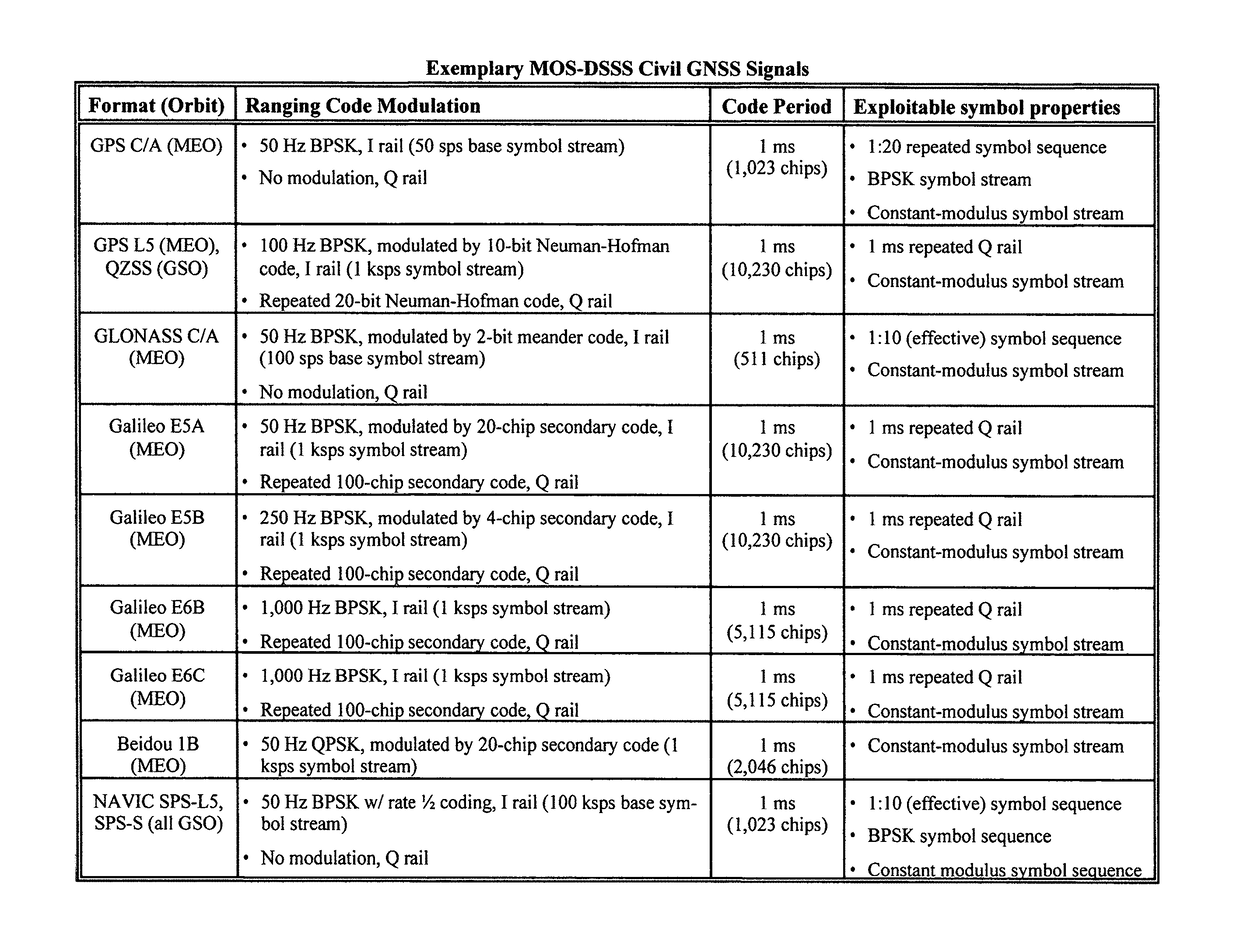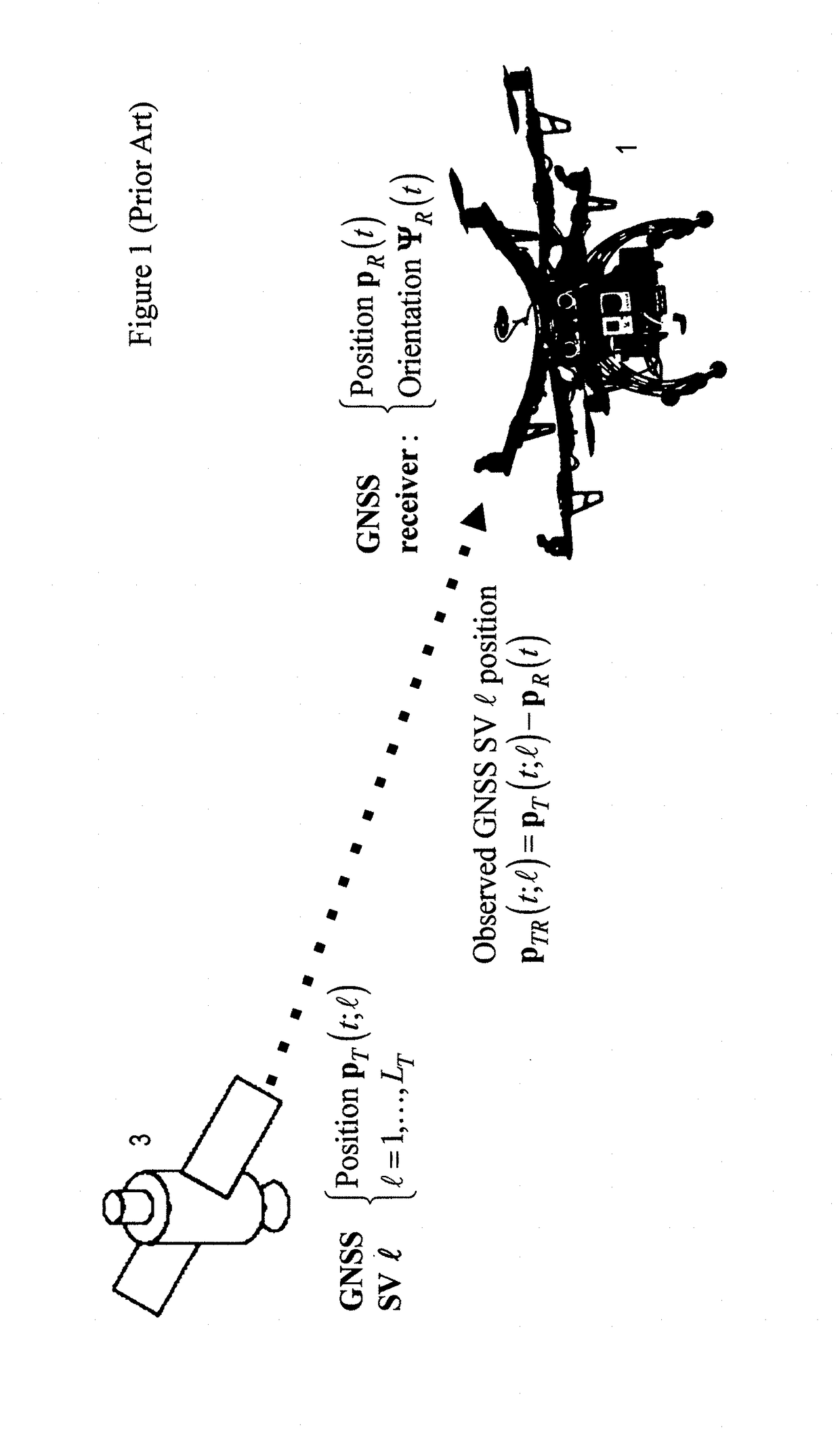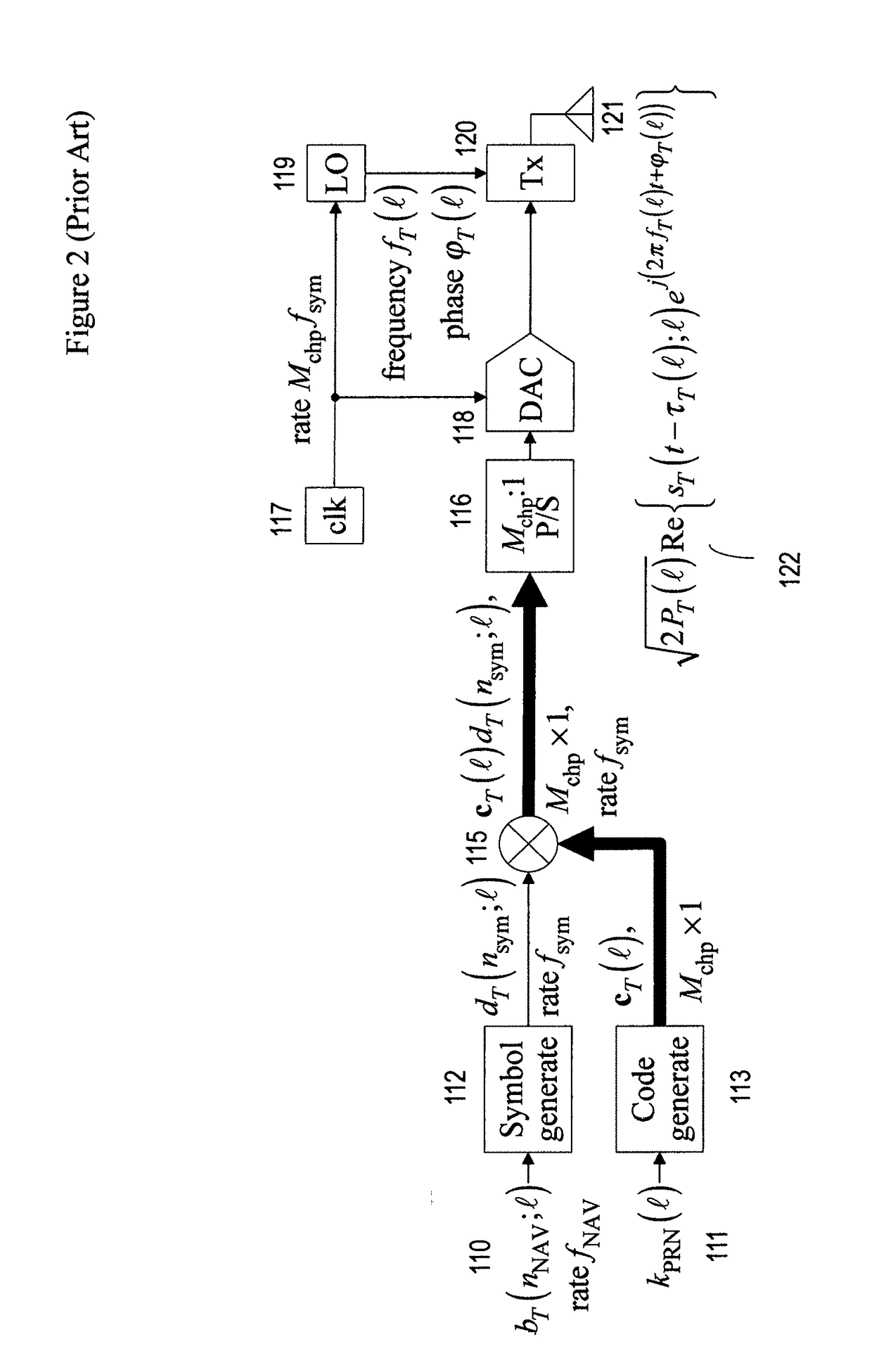Blind despreading of civil GNSS signals for resilient PNT applications
a technology of resilient pnt and civil gnss signals, applied in satellite radio beaconing, measurement devices, instruments, etc., can solve the problems of increasing the cost of the receiver, reducing the performance of the matched filter correlation, and reducing the computational load
- Summary
- Abstract
- Description
- Claims
- Application Information
AI Technical Summary
Benefits of technology
Problems solved by technology
Method used
Image
Examples
Embodiment Construction
Overview
[0059]The invention described herein is a blind, adaptive, despreading, anti-spoofing system for radio transmission comprising at least one antenna and at least one receiver, each receptive to energy in the GPS L1 band, connected to identifying means for receiving, amplifying, and filtering at least one signal-in-space containing coarse acquisition (C / A) code from any of the set of GPS satellites, pseudolites, spoofers, and repeaters; said identifying means further comprising a frequency converter that converts the at least one signal-in-space to a frequency converted signal having any of an intermediate and complex baseband frequency, connected to said means for receiving, amplifying, and filtering; with said frequency converter further comprising at least one analog-to-digital convertor that converts that frequency converted signal to any of a real data stream and complex data stream; and said analog-to-digital converter connected with digital signal processing hardware, m...
PUM
 Login to View More
Login to View More Abstract
Description
Claims
Application Information
 Login to View More
Login to View More - R&D
- Intellectual Property
- Life Sciences
- Materials
- Tech Scout
- Unparalleled Data Quality
- Higher Quality Content
- 60% Fewer Hallucinations
Browse by: Latest US Patents, China's latest patents, Technical Efficacy Thesaurus, Application Domain, Technology Topic, Popular Technical Reports.
© 2025 PatSnap. All rights reserved.Legal|Privacy policy|Modern Slavery Act Transparency Statement|Sitemap|About US| Contact US: help@patsnap.com



